Since the disco craze 40 years ago, dance music has become inextricably linked with technology. For example, the Roland MKS-20 digital piano was the definitive house piano sound when the genre was born, though the Korg M1 later superseded it.
Similarly, the Roland Alpha Juno was a huge component of the ’90s rave sound, thanks to its “Hoover” preset, which can now be re-created with modern softsynths. Meanwhile, instruments such as the TB-303,-808, and-909 continue to be staples in dance-production setups and lend instant credibility thanks to their signature sound.
But as styles change, new technologies become essential, both for improved workflow and for making sure your tracks sound legit in the context of a set. Purists may argue that it doesn’t matter which synth you use as long as the music grooves, but history begs to differ.
For example, the Roland JP-8000’s supersaw has become such a necessary component for epic trance and EDM that nearly every modern synthesizer now ships with its own version.
Here, we focus on 11 products/technologies that have become essential to modern dance-music creators in a variety of popular genres. But because the lines between styles are fluid, our genre suggestions are merely that–a shorthand recommendation that we’re sure artists will expand upon as they work.
Hardware
Ableton Push 2
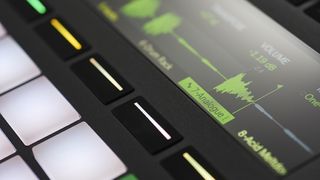
Considering that Ableton’s Push arrived four years after the Maschine Mk I release, it’s hard not to draw comparisons. But while Maschine started as a plug-in that expanded into sequencing and production, Push was designed from the ground up to be a hardware controller for the myriad components of Ableton’s immensely popular DAW, Live.
The first Push’s character-based LCD screen was reminiscent of the original MPC, which should come as no surprise as the hardware was actually a collaboration between Ableton and Akai. Two years later, Ableton amicably brought the Push 2 hardware in-house, updating the screen to a graphic-centric OLED that allowed users to sample, edit waveforms, and adjust effects or synths in a much more cohesive manner.
In addition to its enormous 8x8 grid of velocity-and pressure-sensitive pads, one of the most compelling aspects of Push is that it can be used to control nearly every aspect of Live’s workflow, without a lot of arcane menus and searching for parameters. Ableton’s attention to seamless user interfaces shines with Push, which is why it’s finding its way into non-dance music-based rigs, too.
While Push can integrate with any plug-in that’s compatible with Live, one of its most popular uses is serving as a hardware controller for Ableton’s iconic softsynth, Operator: This synth has its own cult-like following as an essential part of countless techno tracks, Skrillex’s early sound, and now trap and hip hop.
Of course, everything in Ableton Live can be harnessed via Push, often without even glancing at your computer display. This makes it far more than just a controller.
Korg Volcas

While the Minilogue and Monologue are quickly becoming mainstays in dance production rigs, it’s the Volcas that found their way into the hearts of techno producers, worldwide.
The brainchild of wunderkind synth designer Tatsuya Takahashi, the series kicked off in late 2013 with the trio of the lo-fi Volca Beats, the 303-like Volca Bass and the paraphonic Volca Keys, featuring proper analogue oscillators and filters along with voltage-based sync, making it easy to get grooves properly locked. In addition to capturing an immediate following with the techno scene, the combination of affordability and easy access to the internal components made the Volcas a hit with the circuit-bending crowd, who immediately upgraded the Volca Beats with a snappier snare.
The success of the original trio led to three more units, the Volca Sample (a loose homage to the MPC), Volca FM (which featured compatibility with DX7 presets) and the Volca Kick, which is possibly the best analogue trap kick-generator on the market right now.
Like Eurorack modular gear, the Volca series’ affordability makes it possible for producers to pick each one up with spare beer money every few months and expand their rigs over time. Combined with Korg’s Ableton Link-enabled SyncKontrol app, it’s even possible to get everything locked with Ableton Live DJ rigs and impromptu iOS jams.
Moog Music Sub 37

When Deadmau5 exploded onto the scene in 2007, the biggest question among producers was how to get his massive electro lead and bass sounds. Short answer: It’s a Moog; specifically, the Voyager.
But you can also get “that sound” from a Sub 37. For many, it is actually preferable to the Voyage because of its thoroughly modern modulation amenities such as dual LFOs, looping envelopes, updated multidrive, and an intelligently designed sequencer/arpeggiator—all of which are available from a knob-per-function front panel that begs to be touched.
While the Sub 37 excels at monster electro sounds, it’s swiftly developing a following among techno artists with its innate ability to sound dirty, mixed with its unusual modulation options. In fact, from a production standpoint, you can only fit one or two Moog parts in a track because they dominate most other elements. This can make dense mixes a tad challenging. But that’s ok because it’s entirely possible to base a hit track on two Moog parts. Just ask Deadmau5.
It’s also worth noting that the original Moog sound defined ’70s and ’80s funk, so the Sub 37 is right at home on bass and leads for retro-tinged R&B, trap, and hip-hop. For that reason, savvy producers with an ear for soul will almost always include a Moog in their rig.
Native Instruments Maschine
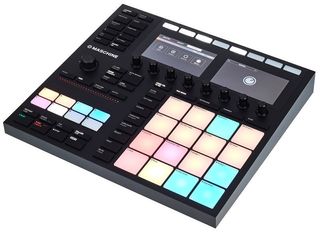
It’s not a huge leap of the imagination to suggest that the unstoppable success of Akai’s MPC series inspired Native Instruments to develop Maschine, a hybrid system consisting of a pad-based controller that works in conjunction with NI’s enormous range of software synths and samplers.
Maschine’s original focus, like the MPC, was squarely on software-based sampling and pattern sequencing, incorporating elements of the developer’s Komplete software suite. In 2012, Maschine Mk II arrived, with a new audio engine, advanced sequencing, and far deeper integration with NI’s Komplete bundle. At that point, Maschine came into its own as an integrated composition and production tool for nearly every type of electronic music—dance-based or otherwise.
While an exhaustive analysis of Komplete is outside the scope of this feature, Maschine’s integration with NI’s Massive cannot be understated. As a softsynth, Massive dominated the early evolution of genres such as progressive/EDM and dubstep. Even to this day, Massive is a core component of many big-room styles, more so than some of NI’s more complex offerings like Absynth and Reaktor.
That said, it’s hard to single out individual softsynths in the Native Instruments catalogue of products as tools for specific genres. They’re all part and parcel of the current world of dance music production. And for many producers, Maschine is the glue that ties them together.
Novation Peak
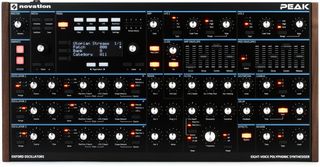
For a synth that’s barely started shipping, Novation Peak’s buzz in the dance world–specifically progressive and trance–is astonishing. And despite the BassStation II’s entrenched success in the UK scene, we have a feeling that Peak is going to find its way into even more production setups, thanks to its revolutionary approach to oscillator design.
Referred to as NCOs (numerically controlled oscillators), Peak’s oscillator DACs operate at 24 MHz (24 million times per second), theoretically obliterating any form of aliasing and veering into the sonic “purity” of analogue oscillators. These three NCOs offer standard waveforms, wavetable synthesis, and cross-modulation, and they are followed by a proper analogue multimode filter, along with three analogue distortion points within the signal chain.
State-of-the-art specifications aside, Peak’s features combined with Novation’s street cred virtually ensure that this synth is going to be a big part of forward-thinking gearheads, especially thanks to a front panel festooned with knobs and faders.
Roland AIRA/Boutiques
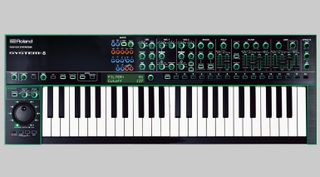
While the System-8 is the mothership of the AIRA line for artists who need to have it all in one place (and the TR-8 nails the sound of 808-centric trap), Roland’s Boutique line and AIRA System-1 have become go-to modules for artists who want extremely specific sounds without the expense and hassle of acquiring vintage units.
For example, the System-1 offers superwaves for massive festival leads, yet it can also double as a note-perfect SH-101 clone if you’re looking for the rave sound of the early ’90s. Speaking of raves, their new TB-03 is arguably the top hardware 303 clone for acid house and techno, and its integrated distortion and delay/reverb means you don’t have to cart around guitar pedals as you did in the old days.
To capture the timbres of the popular Juno-106, Roland added the JU-06 to its stable of Boutique synths. That’s because the Juno-106 was not only essential to ’80s electropop, its flavour helped define the early house and techno scenes of the ‘90s. Essentially, it was a polyphonic SH-101 with a lush chorus, and its speciality remains vintage pads, along with the occasional noise-infused lead. As a side note, the Juno’s sub-oscillator and juicy resonance found their way into numerous ’80s-era funk and R&B tracks, so it’s got soul, too.
The AIRA TR-8 includes an array of legit 909 sounds in addition to its 808 (and optional 707), but the Boutique TR-09 has stolen some of its thunder–especially for fans of ’90s-era classic house, which requires 909 kick, snare, hats and cymbals for authenticity. Interestingly, the 909 toms are easily identifiable in early techno, and the 909 kick is to hardstyle what the 808 kick is to trap.
Rounding out the Boutiques, the JP-08 and VP-03 are tailor-made for synthwave, as the originals were used by legions of synthpop acts in the 1980s. Based on the Jupiter-8, the JP-08’s presets read like a hit parade of essential new wave sounds, while the VP-03’s vocoder evokes both Laurie Anderson and Daft Punk.
Another big feature of the Boutique series synths is their compatibility with almost every relevant synth standard, including voltage triggers and CV/gate (on the TR-09 and TB-03, respectively), as well as both DIN MIDI and USB audio/MIDI on all units. With a bit of latency adjustment on the audio side, you can even sync their integrated sequencers via USB to compatible DJ software if you’re feeling ambitious.
• The 18 best synthesizers 2020: keyboards, modules and semi-modular synths
• The best VST plugins 2020: the finest synth, drum machine, sampler and effect plugins you can buy right now
Software
Korg M1 Legacy Edition
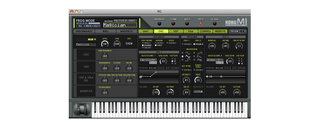
By many accounts, the Korg M1 (and its related successors) sold more units than any other hardware synthesizer, including the DX7 and Minimoog. As a result, its sound is firmly entrenched as part of the fibre of ’90s pop and more specifically the house music of that era. So, if you want street cred in the world of deep and classic house production, you need that piano sound (Piano 16') and those organs (Organ 2 and Organ 4). Yes, you can use other synths, but it just doesn’t sound “right.”
And if you’re into other ’90s dance genres, skimming through the M1 presets, you’ll find quite a few instantly identifiable sounds from that time, like the choir, Lore (a rainstick-like ambience) and Pole (a struck flagpole that’s great for vintage metallic clanks). On the percussion side, the M1 finger snaps appeared in quite a few deep house tracks as well.
Getting around on an original, hardware M1 was a bit of a chore, with its two-line LCD, but fortunately its essence is still available in two software flavours with easy graphic interfaces: Korg’s Legacy Collection (VST, AU and RTAS) and the iM1 for iOS. Both are priced under $50 and the iOS version integrates directly into Korg Gadget if that’s your mobile studio of choice.
Lennar Digital Sylenth1
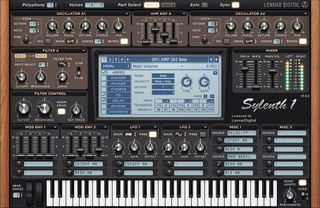
First released in 2007, Sylenth1 was an instant worldwide hit with the trance scene, but its following quickly grew far beyond that market, thanks to its clean virtual-analogue oscillators with impressive anti-aliasing. Better still, it is extremely lightweight on CPU usage. Both of those traits helped propel Sylenth1 beyond the trance scene and into the DAWs of producers in a wide range of dance genres, including modern synthwave tracks. One particular reason is that its straightforward synthesis tools are enhanced by a baked-in approach to layering.
Essentially, every Sylenth1 preset can consist of two virtual-analogue synths with classic, familiar features and a strikingly warm sound. Newcomers can quickly delve into the dual layers without feeling lost in modulation and wavetable options, which lends itself to a fast workflow. More advanced users can tinker with the filter routings, which let you feed the output of either layer’s oscillators into the other’s filter or combine them all for unusual filtering effects. From there, Sylenth1 offers an array of useful effects, including a punchy compressor that’s a big part of its sonic identity, even now.
Another fan-feature is an arpeggiator that cleverly integrates a one-bar step sequencer as an option, making light work of everything from acid-like 303 riffs to vintage Giorgio Moroder patterns. Nowadays, there’s an endless assortment of alternatives, but Sylenth1’s fan base remains committed for a reason: It sounds great, goes easy on the CPU, and doesn’t overwhelm you with options.
Reveal Sound Spire
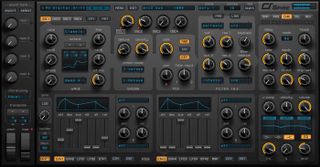
Spire may seem “underground” Stateside, but across the pond it has an enthusiastic following among iconic trance acts such as Dash Berlin, Armin van Buuren, and Ferry Corsten. On one hand, it’s heavily inspired by a few more popular synths on this list, but its sound is decidedly more digital and edgy than its forebears, so ultimately this becomes a matter of taste.
Just cruising through the presets, it’s immediately apparent that Spire doesn’t try to sound analogue or anti-aliased. As a result, the factory collection is full of hard, in-your-face digital textures that cut through big-room mixes unapologetically. In fact, if you’re a trance or hardstyle aficionado, you may even hear a few familiar patches from countless festivals.
If you’re a fan of that hard European arena sound, designing original patches in Spire will keep you busy for a very long time: It provides four oscillators (each offering multiple synthesis types, including preset wavetables), dual multimode filters, extensive modulation options, and bright multi-effects section. While all of that may seem like overkill, the end results nail the ingredients of the genres that rely on its sound.
Spectrasonics Omnisphere 2

Omnisphere 2 has an interesting relationship with dance music. Designed by legendary programmer Eric Persing—a man who arguably defined the modern concept of “Rockstar Sound Designer”—Omnisphere’s original users consisted largely of synthesis connoisseurs, soundtrack composers, and forward-thinking electronic musicians. Let’s face it, Omnisphere’s feature set is not only deep but intimidating, combining an extensive collection of gorgeous sampled instruments, wavetable and granular synthesis, FM, eight simultaneous arpeggiators, and up to 10 tone sources per voice. This synth is not for the faint-hearted.
But thanks to a rapidly growing market for preset libraries that are tailored to specific dance genres—and the ability to import your own original audio into its synthesis engine—Omnisphere is now insinuating itself into nearly every modern genre that depends on radical “how’d they do that” sounds.
While there’s always been a fan base with progressive and trance diehards thanks to its huge collection of lush pads and hard stabs, future house and trap are now embracing Omnisphere in a big way.
Xfer Serum
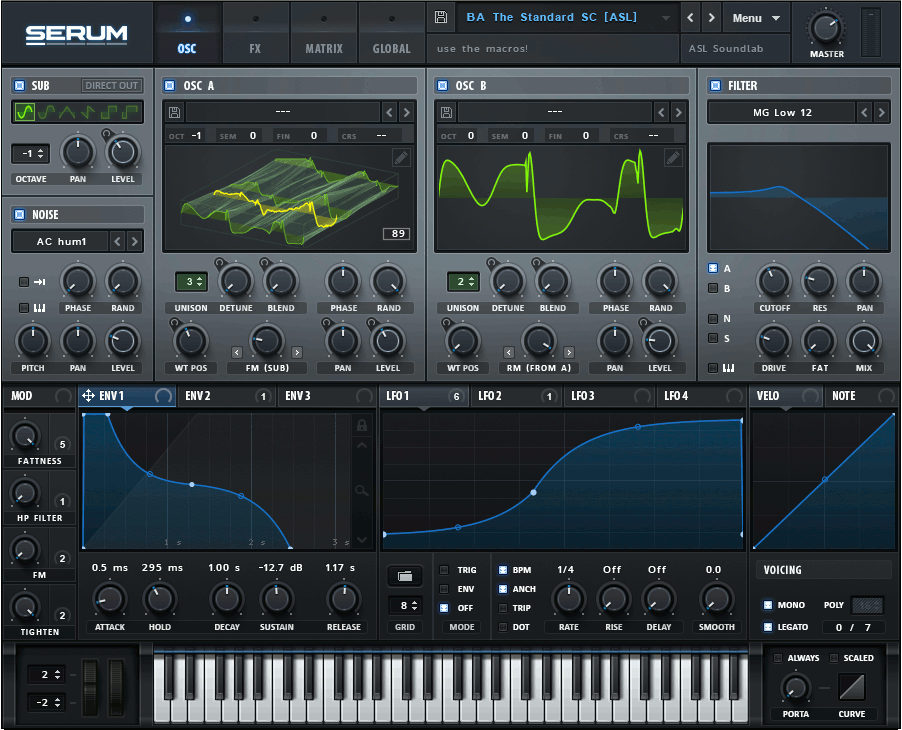
Like Ableton Live, Serum is one of those rare tools that lets you do pretty much anything you can think of, without forcing you to navigate an unruly or cluttered interface, which is why it instantly caught everyone’s attention when it arrived nearly three years ago. (Full disclosure: I’ve designed several preset packs for Xfer, largely because I love working with Serum.)
For starters, its dual wavetable oscillators have no audible aliasing (a tough trick to pull off ) and offer a huge range of preset options. And when it comes to creating your own wavetables (via an incredible range of methods), the process is absolutely painless. Serum even lets you drag and drop audio files for wavetable conversion, and if you’ve done a tiny bit of advance planning, the imported audio will instantly turn into something useful.
As for filtering, Serum includes nearly 100 options covering everything from standard multimode fare to exotic ring-mod and reverb types. Lastly, you can integrate your own original audio samples by dragging and dropping them onto the noise generator, where they can be tuned and routed to the filter, then layered with the two oscillators and a flexible sub-oscillator.
Naturally, Serum offers extensive modulation and effects, but with designer Steve Duda’s background as a teacher, the four graphic envelopes and eight LFOs all display exactly what’s going on every time you hit a key. What’s more, almost anything can be modulated by simply dragging-and-dropping elements, which feels a little like plugging in patch cables. And if you’re modulating something like filter cutoff, its curve will move in synchronization, too.
When it was first introduced, Serum quickly found a following among dubstep and EDM producers, but as word of its capabilities spread, it became a big part of the trap, future bass, and synthwave scenes. Best of all, if you have a Splice.com account, you can rent-to-own Serum for $10/month. That, too, is groundbreaking.


